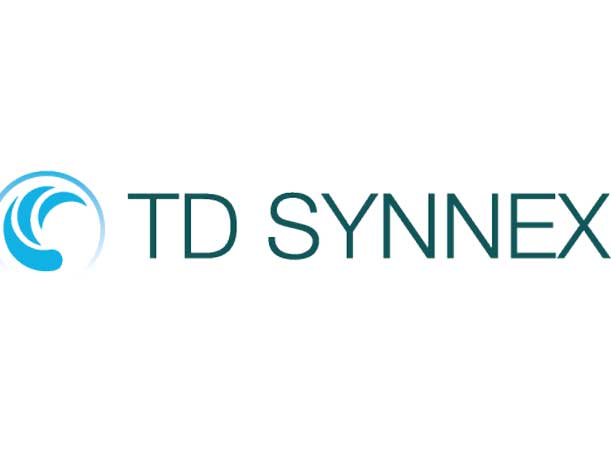TD Synnex CEO: Advanced Solutions Business Up, PCs Still In Decline
‘The offerings that are related to digital transformation—cloud, analytics, IoT, cybersecurity, hyperscale infrastructures—our high-growth areas continue to materially, as an industry, outpace the market. So for Advanced Solutions, it’s a combination of those high-growth technologies that fit within that category, with cloud, analytics, IoT, cybersecurity being really quite robust, along with the fact that there was some pent-up backlog that’s being fulfilled,’ says TD Synnex CEO Rich Hume.

Looking To Move Past The PC Drag
TD Synnex’s first fiscal quarter 2023, which ended Feb. 28, was a mixed bag for the world’s largest IT distributor. The company, with dual headquarters in Fremont, Calif., and Clearwater, Fla., Tuesday reported revenue of $15.1 billion, which was down 2 percent year over year, although that number was up 1 percent in constant currency.
At the same time, TD Synnex, formed in September 2021 from the merger of Tech Data and Synnex, provided second fiscal quarter 2023 revenue guidance of between $14.0 billion and $15.0 billion, which is down from the actual second fiscal quarter 2022 revenue of $15.5 billion.
TD Synnex CEO Rich Hume told CRN in an exclusive meeting that while sales of the company’s Advanced Solutions business—which consists in large part of data center infrastructure technologies—rose over last year and are expected to continue to do so in the current quarter, the company’s endpoint business—which includes PCs—suffered in large part from the success the PC business had early in the COVID pandemic.
[Related: TD Synnex CEO: We’re Bringing ‘Sales Engagement Or Energy To Where There Is Demand’]
“The PC category started to see a reasonably steep decline the last half of last year, and it’s continued,” Hume said. “So the compare gets easier. Year on year, we’re still in the period of more tough comparison, that is, our Q1. And there was a point of view that the channel in totality had to work down inventory. Those higher COVID levels of inventory have been worked down across the supply chain.”
Hume, in his discussion with CRN, spent time to go behind the numbers to look at what is happening with TD Synnex and what to expect for the rest of fiscal and calendar 2023. Here is what he had to say.

For TD Synnex’s fiscal first quarter 2023, revenue was down 2.2 percent over last year, even though analysts were expecting revenue to grow by about that same amount. What happened?
Yes, so first of all, the revenue in constant currency around the world had grown 1 percent. And then our total gross billings had grown about 4 percent at constant currency. Not to get too detailed, but the way you account for software is what is called netting. So you actually net the revenue to gross profit level. And so actually, we saw a mix shift in our business more toward software, things that get netted in cloud offerings. So therefore, the growth rate at the gross billings level was healthier at 4 percent at constant currency and then 1 percent at the net revenue level. And the shift in mix has allowed us to be at the high end of the earnings per share or profit range that the market was anticipating. But to give you that background to answer your question, we were short of the midpoint of our revenue guidance. And it was due to the PC ecosystem being weaker than we had projected. The endpoint segment of our business, which sort of represents the PC ecosystem, was weakest in the Americas and not quite as weak in Europe, Asia-Pacific and Japan. But it’s still weak.

Do you anticipate the PC part of TD Synnex’s business, the endpoint solution business, will recover growth anytime in the near future?
We hear the premier vendors talk about a recovery in the back half of the year. And it’s really predicated on four items or thereabouts. The first one is that the PC category started to see a reasonably steep decline the last half of last year, and it’s continued. So the compare gets easier. Year on year, we’re still in the period of more tough comparison, that is, our Q1. The second piece is that there was a point of view that the channel in totality had to work down inventory. Those higher COVID levels of inventory have been worked down across the supply chain. So that kind of slowed sales a little bit. The third is, there’s an expectation around the post-pandemic refresh. And that is aided a little bit by the Windows operating system transition to Windows 11 that is occurring. And oh, by the way, that OS environment has better security attributes. And then the last piece of that is an expectation that government spend will be more robust in the PC segment in the back half of the year than when we were in the front and mid-part of COVID. Most of the transition of school to home and things like that had created an incredible level of demand for helping those institutions. And last year, it was very, very minimal. And so there’s an expectation that the government demand will help.
So it’s those things cumulatively that add up to the expectation in the industry that there’ll be a better back half of the year. But with all of that said, it’s hard to measure the economic circumstances. We obviously know that the economy is slowing. And then you have the banking piece that emerged a couple of weeks ago, which might have an impact on further slowing, if you will. So it’s very difficult to really have a clear view on the back half of the year.

How is the current banking impacting demand?
The bank issues that have occurred here in the last couple of weeks have primarily been regional and community banks. So if we think about the business partner ecosystem, a lot of the reseller community, sure, gets some level of financial backing or credit or borrowing from those institutions. And there is speculation that the entire group [of banks] might become a bit more conservative with lending and credit practices as they all contemplate how they ensure liquidity for their customers moving forward. So it’s something that’s being watched right now. There’s no clear answer, but that is a possible outcome.
So if that were the case, could distribution step in in terms of picking up some of the slack on the credit side?
Well, certainly, we have a lot of credit that’s extended today. We provide credit for our trade practice. But there’s other investments that are made by resellers, etc. in terms of their operations that banks might be lending for that would be outside of the trade relationship. So I separate the two, and that’s the way the industry thinks.

TD Synnex’s Advanced Systems business grew during the quarter. Where did that the growth come from?
First of all, the Advanced Solutions business for the last couple of quarters has been more robust growth-wise than what we have historically seen. So part of that clearly was pent-up demand that’s still being taken care of for COVID. Part of it was higher backlogs that were being fulfilled. We’re in a situation now where the supply chain or the backlogs for the PC ecosystem and the Advanced Solutions or data center business are getting near normal. And so as that occurs, we’ll move more toward a normal organic growth moving forward. So I think that pent-up demand among COVID, etc. had had help fuel Advanced Solutions.
But then the last piece, and the really important piece, is, within the market, as we’ve been talking for the last couple of years, the offerings that are related to digital transformation—cloud, analytics, IoT, cybersecurity, hyperscale infrastructures—our high-growth areas continue to materially, as an industry, outpace the market. So for Advanced Solutions, it’s a combination of those high-growth technologies that fit within that category, with cloud, analytics, IoT, cybersecurity being really quite robust, along with the fact that there was some pent-up backlog that’s being fulfilled. So that assisted in the growth rates within Advanced Solutions.

Given that, why is TD Synnex guiding second-quarter revenue down compared with last year?
Again, I want to take you back to gross billings in Q4 were at 4 percent [growth], with more of a mix shift toward software. And it measures your total productivity. That’s the true sales. There’s some accounting things that happen to get to net revenue, right? So on a year-to-year basis at a gross billings level, we’re relatively flat, but there isn’t a lot of growth. And what we told the market today is when we look at Q2, it looks a lot like Q1, meaning that the PC ecosystem or endpoint solutions segment will likely be declining. Yet, at the same time, there will be growth but not as much growth within the Advanced Solutions category.
We’re still fairly early in 2023. What are some strategic initiatives that we can expect from TD Synnex for the rest of the year?
We are boringly consistent. We’re investing and continue to invest in an accelerated way in our high-growth technologies: cloud, analytics, IoT, cybersecurity, hyperscale infrastructure. And in fact, in the call, we talked about our total growth being a bit tepid, but that class of our basket of offerings had grown 15 percent in the first quarter, and now are more than 20 percent of our gross billings. So the net of it is, where we’ve been investing for the last couple of years is really paying dividends for us. We’re going to stay on that track.